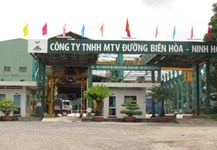M&A create breakthrough in establishing strong sugarcane enterprises
M&A move between Ninh Hoa Sugar (HOSE: NHS) and Bien Hoa Sugar (HOSE: BHS) to create breakthrough in establishing strong sugarcane enterprises which have enough force to move into the integration
Find out a direction for a vigorous change
If in 2012, the move which Thanh Thanh Cong Tay Ninh Sugarcane Joint Stock (HOSE: SBT) purchased about 23% BHS’s shares was a big event in sugarcane industry, in present, the story which Ninh Hoa Sugar Joint Stock Company (NHS) is merged into BHS in this time also attracts a lot of attentions in the market.
For NHS, it is an enterprise with the most stable growth rate of the posted companies of sugar industry, why does NHS accept an absolute merger and become BHS’s subsidiary?
First of all, for the interest, after merger-acquisition (M&A) activity, the enterprise can arrange the capital, restructure investments properly to mitigate costs and raise its scale and reduce competitive risk among enterprises in the same industry on its own. For example, for the M&A between NHS and BHS, in addition to inner interests, a larger goal of local sugar industry is to create enterprises with large production scale that can support each other regarding material source, market and competitive advantage when Viet Nam will integrate into ASEAN Free Trade Area (AFTA).

Make strong advantage from M&A
In objective view-point, both BHS and NHS are enterprises that own strong advantages in sugar industry. Typically, for NHS, although it is an firm with small scale and turnover (compared to top 4 leading posted companies), its operation is quite effective. Citing as an example, in 2013, while many sugarcane enterprises bore losses or got decreased business result but NHS still had even growth in which its turnover increased 12% and 23% to after-tax profit against 2012.
Due to possessing separate sugar area, NHS can be on its own in price control. In 2010, NHS’s material area acquired 7,000 ha, mainly under the company’s farm; in 2013-2014, this figure increased 10,300 ha. This is an advantage so that NHS can reduce production cost.
On the contrary, NHS has the highest turnover scale compared to the posted enterprises in the same sugar industry, but sugarcane material, especially direct farm area is always a worry. Although it possesses material area up to 11,000 ha but only 1,000 ha is under the company’s ownership. Therefore, in 2014, BHS’s goal is to enlarge direct sugar area and deal with the problem of product price reduction.
These premises will help BHS have enough raw sugar volume to produce, provide RE fine sugar factory – a product as a BHS’s strength and leading fine sugar market share in the country. At the same time, BHS will recover a shortcoming of too high cost/capital rate BHS always faces and promote sugar production capacity of two units. Accordingly, BHS’s average annual sugar output will increase significantly, estimated nearly 240,000 tons, the largest level compared to finished sugar production capacity of firms in the same industry.
Furthermore, both parties benefit the output when they possess large customer volume in both areas and combine each party’s private strengths on products.
In present, BHS is counting for 70% retail sugar market share in the country. If adding BHS factory’s production cost after the M&A that declines significantly, it will have market share in both the South Region and the Central Coast Region. At the same time, BHS will have enough competitiveness with foreign sugar on both the price and quality when Viet Nam will integrate entirely.
Moreover, after the M&A, BHS’s financial capacity, scale will be enhanced largely. With double capital scale, BHS – NHS can consider to properly allocate investment projects, extend its production
Therefore, making mutual strengths, limiting or removing weaknesses are benefits of any M&A deal. Of course, BHS and NHS are not an exception.
Le Thi Phuong Thao (Ms.)













